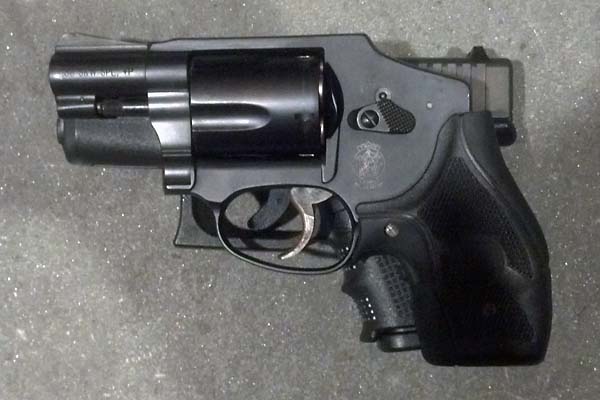I’m not going to pretend I’m some kind of fantastic innovator. AIWB is pretty popular these days. I’m late to the party. I get it. But it’s still a decent topic, and when all of your trainer friends use it daily, it might be worth looking into. And I’m really big into experiential learning, so what the hell, right?
Let’s review our terms. AIWB (Appendix Inside the Waistband) is a mode of carry where the gun is forward of the hipbones (usually between 10 o’clock and 2 o’clock on your person). It has a number of advantages over traditional behind-the-hip IWB:
- Better concealment
Faster draw time (generally)
Easier to defend against a gun grab
Much easier access to the gun when seated
At the same time, there’s an obvious bit of caution here. Clearly, we’re in the vicinity of some very important things. For some actual testing, and not just a bunch of nervous prattling, check out Ballistic Radio’s video on the subject HERE. As a bonus, this also includes some good AIWB reholstering technique to maximize safety.
Now that we’ve dealt with that annoying elephant in the room, let’s get on with it. I did need to get some stuff for this experiment. First, holsters. I wanted holsters designed with appendix carry in mind, so I hit up the good folks at Dark Star Gear for some AIWB holsters. Dark Star Gear is also the brand used in the cool video above, they’re the brand used by several of my instructor buddies who kicked off this shindig, and as a further bonus they’re local to me. I got a holster for my Glock 34 (which also fits the Glockblaster if I remove the weaponlight) and another for the Glock 17. While the Glock 17 will fit in the Glock 34 holster, I wanted to see if the reduced length of a Glock 17-specific holster mattered for comfort.
Key things I wanted in my holster were adjustable cant (I wanted to play with zero-cant and negative-cant options), and something to help tuck the gun in close to my body.
I also got a Wilderness Instructor Belt. I got the wilderness belt because lots of my instructor buddies recommended it. They also mentioned that having some kind of belt with the capability for lots of (possibly small) adjustments would go a long way to making my appendix carry experience good.
Also, note that I did not purchase pants with a waist size any larger than what I would wear if I did NOT have a gun tucked inside the waistband.
And now, a brief bit about me. I’m about average height and am a skinny dude. I spend most of my workday sitting. So sitting comfort is important to me, and the easier seated access is a nice plus. Also, my commute is roughly twenty minutes each way.
In terms of pistols, I tried my Glock 34, my Glockblaster sans weaponlight, and my Glock 17 with RMR. Here’s what I found:
- All pistols were concealed much better AIWB than IWB or OWB with a cover garment. I could be quite discrete with even a light t-shirt as a cover garment. While my office is a pretty permissive environment, this made me feel better generally. Also, it’s pretty cool.
Both guns were comfortable seated at my desk or in my car. I had no complaints and wasn’t tempted to remove my gun to improve seated comfort.
The Glock 34-length holster made bending over a little uncomfortable. The Glock 17 less so. I don’t bend over much during the day, so this wasn’t a huge downside. Still worth noting.
My draw times from concealment are faster. I expect them to improve with practice.
My instructor buddies were spot-on about having a belt supporting a wide range of adjustments. The wilderness instructor belt is a lot more comfortable with an AIWB holster than my standard heavy leather belt, mostly because of the wider range of adjustments.
So my conclusion overall is that I really like appendix carry. It works well for me, my body type and the guns I like to carry. As with everything else, your mileage may vary. However, if you’re curious about AIWB, I would encourage you to try it out with some purpose-built gear.

 Unlock with Patreon
Unlock with Patreon